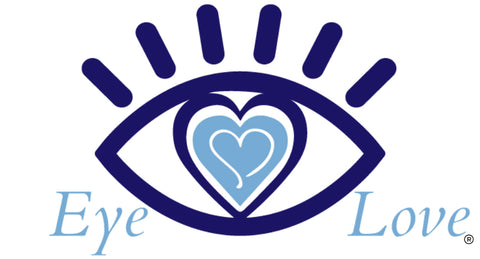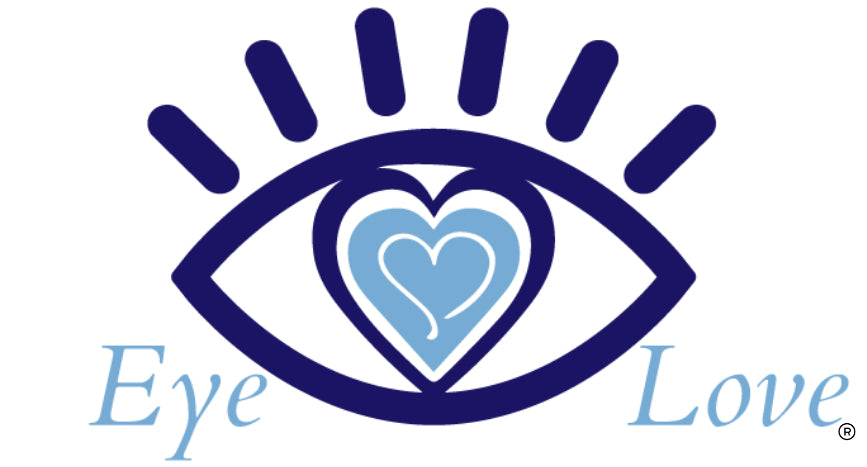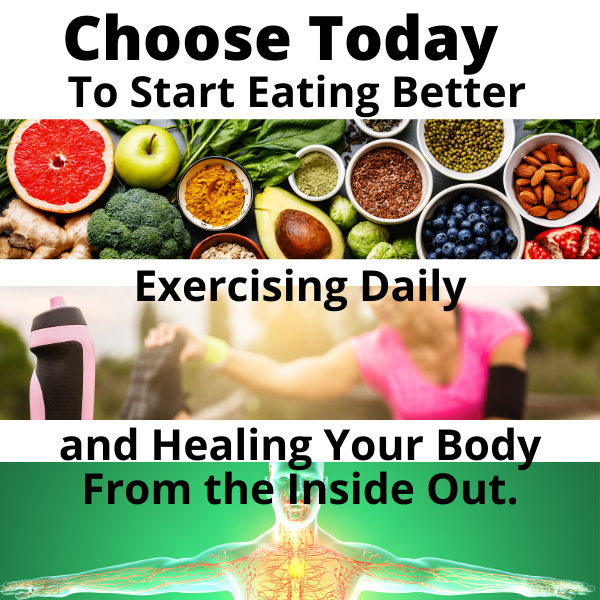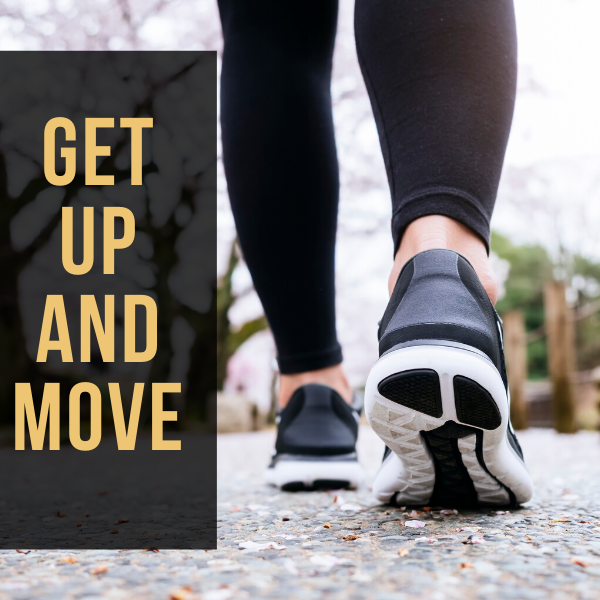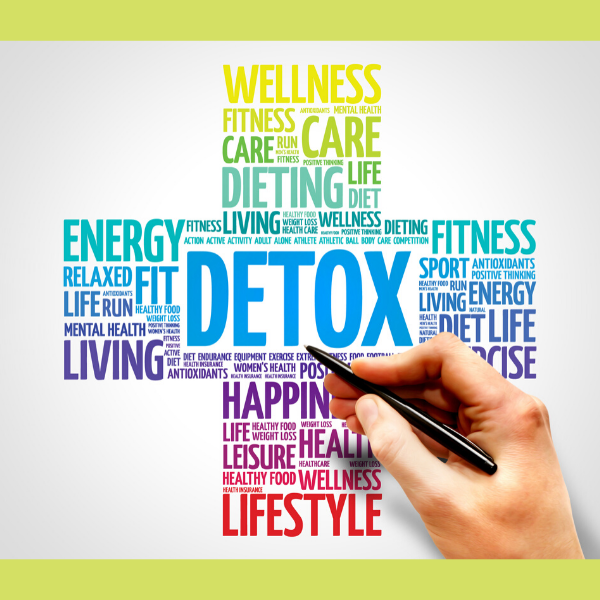Chapter 5 - Simple Meal Preparation
Chapter 5 is best summed up in charts for green smoothies, lunch, and dinner. We have compiled this in a Google doc, which you can print for at home use. Click here to access this document.
Chapter 6 - Move Your Body
Treatment for ALL disease should start with drinking plenty of water and exercising daily. According to the CDC, 80-90% of adults and teens do not exercise. That is 8-9 out of every 10 people that do NOT exercise. No wonder health care costs are rising and disease is rampant in the United States.
The biggest problem we see as practitioners is that the advice we give our patients about diet and exercise are completely ignored and patients just want to feel relief from the symptoms of the disease. A disease is your body’s way of telling you that you are doing something wrong (most likely following a Western diet and failing to exercise).
With that being said, DO NOT RELY ON YOUR PRACTITIONER TO CURE YOUR DISEASE. This is up to YOU and YOU alone. You can choose today to start eating better, exercising daily, and healing your body from the inside out.
What Are Some of the Benefits of Exercise?
Exercise is one of the most beneficial activities you can engage in to improve your life, from your mood to your sex drive. Exercise helps circulate blood in a more efficient manner, which delivers oxygen in a much more efficient way. This delivery of oxygen will help in healing your entire body from inflammation.
Also, a dopamine hit will come across you and last throughout the day. Dopamine is responsible for increasing calmness, awareness, and your presence in life while decreasing anxiety, depression, anger, and more.
Some other benefits of exercise include the following according to the Mayo Clinic:
- Controls and helps you lose weight
- Combats health conditions and disease
- Improves your mood and combats depression
- Boosts energy levels
- Promotes better sleep
- Puts the spark back into your sex life!
What a Sedentary Lifestyle Causes…
Lack of physical activity can cause a list of ailments and symptoms which increase your risk for developing disease. Sedentary lifestyles cause an extreme dive opposite of those exercise-enhancing benefits above. According to Men’s Health, these are:
- Depression, anxiety, restlessness, hopelessness, and fatigue
- SIGNIFICANT increased risk of cancer
- Memory loss
- Increased blood sugar and risk for diabetes
- No more sex… Or at least a decreased sex drive :(
- Terrible sleep
- Increased back pain (especially lower back)
How Much and What Kind of Exercise?
This depends on the shape that you are in, but we shoot for about 210 minutes of exercise per week (30 minutes per day). we know this sounds like a daunting task, but we are going to give you a complete action plan to get to 30 minutes per day. We now do 45-60 minutes per day, five to six days per week. WE DIDN’T START HERE. We gradually worked our way up to it and we blocked off time every morning to work out.
Also, you don’t have to exercise all at once. You can do five to ten minute bursts of exercise throughout your day, that won’t break a sweat (sometimes) and will help give you more energy throughout your day. You could also go to the gym in the morning and then take your dog for a walk in the afternoon, for example.
Exercise Plan If You Are Currently NOT Exercising
How do you eat an elephant? It is a pretty big task that would be tough, but you do it ONE BITE AT A TIME!
Week one is all about getting back into the routine or creating a routine
- Start waking up an hour earlier, hyper-hydrating, and going on a five minute brisk walk (or as long as you can)
- Do this daily (Pain permitting, and soreness is not pain. Walk through the soreness.)
- FIVE MINUTES PER DAY is all you need to get a habit started.
Week two through six is all about adding time
- Add five minutes per week.
- Week two = 10 minutes of brisk walking per day
- Week three = 15 minutes of brisk walking per day
- Week four = 20 minutes of brisk walking per day
- Week five = 25 minutes of brisk walking per day
- Week six = 30 minutes of brisk walking per day
After week six, maintain this 30 minutes per day at the VERY LEAST
- If you can, continue adding five minutes per week until you get to 60 minutes per day
What we see with our patients that start doing this is they can’t stop and exercise becomes an addiction, but a good one. We have seen overweight 50 year olds lose 100 pounds and walk a half marathon within a year of starting this. You can do it!
Exercise Plan If You Are Currently Exercising
Keep up the good work! See how you stack up against 210 minutes per week and try to get there if you are not already there. You are on the right path.
This can be in one 20 to 30 minute session in the morning or after you get off work combined with short five to 10 minute bursts of exercise throughout your workday or one big session in the morning or evening. We prefer breaking it up throughout the day to get the heart rate increased after sitting for a while.
You can also look into HIIT training. The problem with most of our workouts is that we are just going through the motions of an exercise and barely even challenging ourselves. Think about the last time you were on the elliptical, did you change the resistance at all? HIIT stands for High-Intensity Interval Training and can be done in as little as 15 minutes. 15 minutes of HIIT training is better than doing the elliptical or running for an hour. HIIT burns a tremendous amount of calories in a short time, raises your metabolic rate (fat burning) for hours afterwards, helps you lose fat and gain muscle, improves oxygen consumption, and reduces blood pressure and blood sugar.
By the way, sitting all day is KILLING us slowly and is as dangerous as eating unhealthy food. Get up and move!
We all have breaks or should be taking breaks periodically while working. I set a 25 minute timer and work hard on whatever I am working on at that time (for example, writing this book). When the timer goes off I take five to 10 minutes to get up, drink water, do some jumping jacks, planks, run in place, burpees, squats, or whatever you are feeling at that time. After the five to 10 minutes is up, I jump back in to what I am doing.
Also, don’t forget about stretching. Flexibility is a huge benefit to your body and will help reduce pain and allow your body to move more freely without pain. There is a reason that practices like Yoga, Pilates, and stretching centers (yes, it’s true) exist. Stretching plays a vital role in your health.
Meet Beth (True Story)
Beth was a patient of ours who was always cheerful and full of life. Beth was about 210 pounds and 55 years old. She did not exercise or eat well. One night, she fainted in her house. She was rushed to the hospital with a blood sugar of over 700 and on the verge of dying. Beth did survive and decided she was going to take matters into her own hands.
She completely changed her diet, eliminated all processed foods (breads, cereals, processed meats) and started an exercise program. In 90 days, she was able to lose 30 pounds and is feeling better than ever. We are so thrilled!
She was a diabetic at that ER visit but is now medication free!
This is the power of diet, hydration, and exercise.
ACTION ITEM
- Print your exercise guide chart by visiting www.RethinkingDryEye.com under the Exercise tab.
- Bookmark www.RethinkingDryEye.com to watch exercise videos of varying time and intensity and build your way up to 30 minutes per day. Look for them under the Exercise tab.
Chapter 7 - Eliminating Toxins
Although everything mentioned above will create the biggest difference in your dry eye battle, a few other lifestyle modifications should be taken into account. We are constantly exposed, either directly or indirectly, to toxins. Toxins in our water, food, air, home, and work are constantly bombarding us whether we know it or not.
When a toxin is intense enough, or you’re exposed to a large dose, it can cause a severe enough reaction in your body that we notice it. Toxins can cause reactions such as vomiting, shaking, skin hives, rashes, allergies, fever, dry eyes, eczema, asthma, trouble breathing, and other forms of inflammation.
But the real problem comes when you are exposed to small amounts of toxins, which don’t cause any acute or immediate reaction, over time and they build up in your system causing problems such as cancer, ADHD, hormonal imbalance, arthritis, and digestive issues. Most people think that these conditions are just a normal part of aging, which couldn’t be further from the truth. Your body wants to be healthy, you just have to help it get there.
Your body has an amazing response to these toxins as it wants to keep your body in a state of homeostasis or normalcy. We have systems and organs in place to help detoxify our body such as the skin, liver, and sweat glands. Our body is constantly fighting these toxins throughout the day. The problem occurs when your body becomes too toxic and the toxins start to win. This, again, comes in the form of cancer, arthritis, chronic illnesses, etc.
Dr. B.J. Hardick from his book Align Your Health put a great perspective on the difference between subtle toxic events and more intense toxic events. He said:
“Consider a food sensitivity with a food allergy, or a gluten sensitivity vs Celiac disease. Someone with a food or gluten sensitivity has a legitimate problem with that food. Their body won’t break the food down properly, and at some point there will be negative consequences. But there are often symptoms that we confuse with other things, like a stomach ache, inflammation, or congestion. Unless you’re looking for it, you might not know it’s there. Meanwhile, a food intolerance or a gluten intolerance at the level of Celiac disease usually makes itself known in ways that are difficult to miss.”
What we are about to go over can be a little overwhelming as the amount of toxins in our lives is vast. I made a special sheet for you at www.RethinkingDryEye.com that will help you go through step-by-step changes that you can easily make in your life that will make a huge difference in the amount of toxins that you are exposed to. DO NOT TRY TO DO EVERYTHING AT ONCE. You will get overwhelmed and revert back to previous ways. My goal with this list is to have it with you at all times to revert to and eventually memorize so that everything becomes habit.
This is similar to the other changes that you are making throughout this book. Make one change at a time and, when that change becomes a habit, move on to the next change. You will truly learn what benefits you more and what benefits you less.
We are going to present to you the most important toxins to watch for and where they are located. We’ll then give you simple solutions to fix or avoid these toxins. Remember the checklist at www.RethinkingDryEye.com.
Toxins From Water | Detoxify With Edible Essential Oils In Your Drink
Simply by drinking water, something we all must do to live, you put yourself in contact with over 150,000 different toxins (including fluoride, arsenic, and chlorine). This does not include the 500,000 other toxins we experience due to foods and other beverages! Yikes…
Water systems in the United States have to pass certain EPA (Environmental Protection Agency) standards in order to be considered “safe.” The problem with this is that the EPA allows an “acceptable” level of most toxins in your water, such as lead, arsenic, metals, antibiotics, and other pharmaceuticals. On top of that, chemicals such as fluoride are added to the water. Even if the EPA is regulating this, they are not always below the acceptable levels. Remember what happened in Flint, Michigan.
Unfortunately bottled water that is stored in plastic containers also contains chemicals that are leaching out from the plastic, which results in toxin contamination as well.
So what the heck are you supposed to do?
Take control of your water purity yourself.
To easily minimize the toxins you're exposed to in your water, first of all make sure you're drinking filtered water. We love our Berkey Water Filtration System, and we recommend it to everyone.
Next, consider adding essential oils such as Lemon, Tangerine, and Grapefruit. All it takes is one drop to notice the difference. You can even add a little Peppermint to your tea for an afternoon pick-me-up.
If you want a great detoxing "cleansing" recipe, try one of these below (can be enjoyed daily):
Dr. Zigler’s Morning Cocktail
1 ounce of Organic, Unfiltered, From-The-Mother Apple Cider Vinegar
1 pinch of Celtic Sea Salt
20 to 32 ounces of distilled or filtered water
"Grapefruit Juice"
3 drops Grapefruit essential oil
3 drops Spearmint essential oil
3 drops Tangerine essential oil
1 quart distilled or filtered water
"Lemonade"
3 drops Lemon Essential oil
1 quart distilled or filtered water
Stop Drinking Cow’s Milk
Yes, you heard that right. Stop it. Cow's milk can potentially be full of antibiotics and hormones, and dairy has been shown to cause inflammation in the body of many individuals (the opposite of what we're trying to do here!)
Instead of enjoying that glass of milk, use the recipe above to feel more alive and healthier than ever or try alternatives like unsweetened almond, coconut, or cashew milk.
Toxins From Food
We all love food but, as stated above, the food we're consuming contains over 300,000 toxins, which may range from preservatives to MSG to hydrogenated oils and artificial colors and flavorings. This is outrageous, but there are obviously things you can do to minimize this load. This should be your first point of attack to eliminate toxins in your life, but also to help heal your dry eye and other inflammatory diseases like heart disease, diabetes, arthritis, and high cholesterol.
First of all, avoid processed foods at all costs. Foods that contain a laundry list of preservatives, artificial colorings, and artificial flavorings have no place in your cabinet. If it is in a box, can, or can be stored long-term then you should not be putting it in your body as the preservation process contains numerous toxins. Switch to eating whole foods, such as vegetables, fruits, and organic, grass fed meat or wild caught fish (limit meat to once per day if needed).
Secondly, buy organic whenever possible. By doing so, you avoid many of the fertilizers and pesticides that your produce and other items often come in contact with. With that being said organic isn’t chemical free, so be sure to wash your produce well! Organic is much better for you than the conventionally raised produce with pesticides and fertilizers.
Thirdly, avoid genetically modified organisms which I discussed in detail previously, but to summarize... a GMO is an organism, such as corn, that has been genetically modified to be able to withstand harsh conditions such as fertilizer use, temperature fluctuations, and other harsh conditions. A key point to remember is that if something is labeled “organic” that means it is both organic AND non-GMO.
A quick aside on the poisons of fertilizers and pesticide use. There is a lake not too far from my home called Grand Lake Saint Marys in Ohio. This once bustling lake is beautiful, with small Ohio towns set-up all around to take advantage of the lake life and enjoy a little relaxation. Over the last 10 to 15 years a small poison has been leaking into the lake rendering it a “no contact” lake. Due to a blue-green algae species called Aphanizomenon gracile, residents are unable to use this lake anymore. This algae species creates a foul odor and has killed off thousands of fish in the area. It also releases liver and neurotoxins, which is what makes this lake “no contact”.
So what is causing this problem with the lake? The root cause is very clear and it comes from runoff manure and fertilizers from watershed lands feeding the lake. The phosphorus in the fertilizers and manure feed the algae. As the algae blooms and dies, it releases toxins and robs the water of oxygen, which then kills the fish.
Think about that for a minute. A whole ecosystem taken down by toxic fertilizers and pesticide use.
Number four on the list of things we can do to avoid toxins from food is to eat more antioxidant rich food. A diet rich in colorful vegetables is one of the best tools for scrubbing your blood, cells, and the rest of your body clean of oxidative species and free radicals.
A fifth thing we can do is bring essential oils into our kitchen to cook with. Cardamom, Ginger, Thyme, Coriander, and Cilantro can all easily be incorporated into meals. How about Thyme in your next soup recipe? Or Cilantro in your next guacamole dish? Coriander is great for flavoring veggies, and Ginger is great in smoothies.
There are so many ways to incorporate essential oils into your cooking, and this will accelerate your body's ability to detox from all of the harmful chemicals that are so unavoidable.
Be very careful when adding essential oils to your cooking and add only after the heating process has been done. Similar to above, you don’t want to heat oils as it damages them. Damaged oils cause damage to your body. Add essential oils AFTER the food is prepared.
Also, as stated above, be careful with how much you add. One drop is potent enough to add flavor to any recipe. It is always easier to add more than to take away. We’ve learned this the hard way!
Finally, stop eating so much fast food and especially stop the unhealthy fast food burger joints. Some healthier options for eating out include a salad bowl at Chipotle (no barbacoa, carnitas, cheese, or sour cream), salads at Subway (no dressing), salads at Wendy’s (no dressing), salads at Panera Bread (no dressing), and there are many more options. Just make sure that the food that you are consuming looks like it would if it were growing in a tree or from the ground.
Toxins From Air
Before we dive in, I want to talk a little bit about the toxins we come into contact with daily. Unfortunately, they're largely unavoidable. But our human bodies are designed to handle detox, and our bodies do a great job of filtering out what they need and what they don't. However, with all of the artificial chemicals and pollution in the air around us in this century, our bodies can sometimes use a little detox boost. There are alternative things you can do to both minimize and eliminate your exposure to toxins, and the ideas I'll present are pretty easy to implement!
Did you know that there are about 200,000 different toxins floating in the air around you? They may be from exhaust, cigarette smoke, fertilizers in the cornfields nearby, or other pollutants. Even if you were living in the far reaches of the rainforest, you'd still be subject to toxins in the air (although yes, better off than someone in New York City).
Air Purifying Essential Oils for Aromatherapy to Detoxify the Air
Our air quality inside our home and workplace tend to be more toxic than the outside air quality. Most think that with all the pollution in this world that outdoor air is somehow more toxic (well maybe in Iran, India, Los Angeles and Beijing). This couldn’t be further from the truth. Getting outside, opening your windows to air out your house, and breathing in fresh outdoor air is much better than the toxic air that we have in our home.
We are going to take some steps in order to enhance the quality of air inside your home, but know that you cannot stop it all. The construction of your house, your walls, carpet, floors, couches, and beds all contain toxins, so eliminating all the toxins is impossible. However, stressing about it is doing nothing for you either (stop stressing, seriously, because it’s worse than the toxins).
Let’s talk about some ways to enhance your air quality.
Step number one, like stated above, get outside and enjoy the outdoors. Also open your windows and air out your home as much as possible.
Secondly since you can control some of the air quality in your home, why not begin detoxing that air with essential oils? This is as easy as buying a diffuser and a few key oils. Some great oils for air purification include citrus oils like Orange and Lemon, Peppermint, Lavender, Clove, and Ylang Ylang.
Simply place 3-4 drops mixed with water into your diffuser and let it run. These oils aid the liver in detoxification as the oil diffuses from the lungs into the blood steam. They can also help promote a sense of calm and be energizing (at the same time).
A third thing you can do is buy an air purifier. Air purifiers can remove up to 99.97% of in-air pollutants and allergens including mold spores, dust, pollen, bacteria, and pet dander, while also capturing odors.
You can also add indoor plants to your home such as ferns, peace lilies, bamboo, dragon trees, and/or a spider plant. These plants are usually very easy to care for, thrive with or without sunlight, and survive even the harshest black thumb (like that of my wife, Dr. Jenna). Plants have been shown to help rid your house of formaldehyde, carbon monoxide, benzene, and other harmful gases and toxins.
Another addition to detox the air quality of your home is avoiding the use of toxic cleaners in your home. We are constantly using toxins to clean our house, do our laundry, and on our body that we are exposing ourselves to more toxins than we need to.
Let’s first discuss a couple of easier alternatives to what you are currently using to clean your house, which can be one area of constant toxins and chemicals. Walk down your local grocery store cleaner aisle and you can smell all the chemicals, fragrances, and toxins in the air. I personally get a headache from this and have to avoid the aisle at all costs.
A very simple fix for replacing your toilet bowl cleaner, kitchen cleaner, bathroom cleaner, shower-head scrubber, window cleaner, and cleaners for pet urine, carpet stains, coffee makers, mopping, and… well you get the idea… Pretty much anything you want to clean can be cleaned with organic white distilled vinegar.
Mix equal parts distilled or filtered water and vinegar in a spray bottle. It is literally that simple. Spray this mixture on kitchen and bathroom countertops, stovetops, backsplashes, toilet surfaces, tile, flooring and almost any smooth surface you wish. Wipe it up with a paper towel or sponge. Vinegar and water solutions can help eliminate dirt, soap scum, sticky spills and hard water.
This vinegar “trick” will help eliminate a huge expense in cleaner, so your wallet will thank you, but it will also decrease your toxin exposure exponentially, which in turn will increase the quality of air inside your home. Bonus points if you use organic white distilled vinegar.
Let’s move on to laundry. Dryer sheets, especially, and laundry detergent are filled with unnecessary chemicals, fragrances, and toxins.
Replace your dryer sheets with organic wool balls. Think about this for a second, your clothes are in constant contact with you. Get rid of the chemicals and make the choice to be toxin free. Wool balls are made of, you guessed it, organic wool. The best thing about wool balls is they never go bad and will last forever. As of this writing, we are still using wool balls we purchased four years ago and they look as good as new.
Wool balls are designed to keep your clothes soft and static-free. They are also great for the environment as you are not constantly throwing away dryer sheets with every batch of laundry. They can also reduce your drying time by up to 40%, which means more savings on your energy bill.
Moving on to laundry detergent. There are a few things that we recommend in this department. For our everyday non-workout clothes, we use organic Eco Nuts. Eco Nuts are an organic soap berry that have been used for centuries in the Himalayas where they natively grow in the wild without fertilizers, pesticides, or chemicals. The berry shell naturally contains soap.
Eco Nuts are safe and recommended for those with sensitive skin, eczema, and allergies, because they are a chemical-free way to do your laundry. Our experience with eco nuts has been nothing but positive, except for with our workout clothes. It tends not to get all of the stink out of those sweaty garments.
We wash our workout clothes separately and use a more natural laundry detergent. The natural laundry detergent may change in the future, so to get the most up to date list of everything we use with links to purchase, visit www.RethinkingDryEye.com and check out the toxins section.
Let’s talk about your poop. No not literally, but we are going to discuss that air freshener that you use around your house. The chemical and toxic ridden aerosol that you spray joyfully into the air to make your house smell “clean” is actually poisoning everyone who breathes it in.
Some better alternatives are the air purifier that we discussed above to help eliminate odors, but also using essential oil based air fresheners. We love the brand Poo-Pourri because it is a non-toxic air freshener made up of essentially oils and other natural compounds, without the use of harsh chemicals, aerosols, parabens, phthalates, or formaldehyde. We use it for the bathroom, of course, but also to freshen up our sinks, trashcans, laundry (spray it on the wool balls or use plain essential oils on the wool balls), and the children’s rooms.
Let's get personal next (like poop wasn’t personal enough)…
What you use for personal care is another toxic environment because you are putting these toxins and chemicals directly on your skin. From makeup to lotion to deodorant to toothpaste to shampoo and body wash, your personal care routine is filled with toxins.
Let’s detox.
Toxins From Heavy Metals
Not only are we exposed to all of the toxins above, but we're also exposed to many heavy metals that can do harm to our bodies. Like discussed above, heavy metals come from things like aluminum based deodorants, commercial toothpaste, aluminum cans, light bulbs, cosmetics, cookware, and even our mercury dental fillings.
Deodorant is filled with toxins and you are putting this on your body non-stop. Once in the morning, after a workout, after a shower… Your body never gets a break. Deodorant has cancer causing chemicals like parabens, steareths, triclosans, TEA, and DEA. It also has other toxic ingredients such as propylene glycol and aluminium. Aluminum is in all antiperspirants to clog your pores and prevent sweating. This is not healthy. Aluminium exposure has been shown to mess with hormone levels, like estrogen, and contribute to Alzheimer’s disease.
Of course, you can absolutely make sure that you're using safe deodorants. We recommend using all-natural deodorant that does not contain aluminium. This will take a little bit of an adjustment, but once adjusted you will notice less staining on the underarms of your shirts (those are toxins being released, by the way) and you will notice less reliance on deodorant.
Toothpaste is another hidden toxin-filled personal care item with ingredients like triclosan (endocrine disruption), sodium lauryl sulfate (SLS causes canker sores), artificial sweeteners, fluoride (yes fluoride), propylene glycol (organ toxicity), and DEA (hormone disruptor).
If you get constant canker sores, make sure to find a toothpaste that does not have sodium lauryl sulfate and I can almost guarantee you will never have one again. This is from experience, because once we dropped SLS from our toothpaste, I went from having one canker sore per month to none. I don’t just mean a small canker sore, I mean a ten out of ten pain, barely being able to eat canker sore.
Instead, opt for a more natural, SLS-free, fluoride-free toothpaste. A few that we recommend can be found under the toxins section at www.RethinkingDryEye.com.
Lotion contains numerous chemicals and toxins. Try opting for something more natural and organic such as a organic coconut oil or organic jojoba oil.
Body wash and shampoo have become incredibly complicated and are filled with toxins as well. There are many natural shampoo bars and bar soaps that contain five ingredients or fewer. We actually make a soap, Heyedrate Tea Tree Oil Soap, that can be used on the body, face, and as shampoo. It works incredibly well for dry skin, dandruff, and blemishes.
Avoid coated cookware and use a cast iron skillet instead. Cast iron skillets actually get better with age and become non-stick the more you use them, which means you can avoid non-stick aerosols filled with chemicals. They also maintain a uniform heat and can be used on the stovetop as well as in the oven. Also, a side benefit is that a little iron gets into your food which is great for battling anemia (spinach is good for this too).
Avoid plastic storage containers and instead opt to reheat and store food in glass containers, such as those from Pyrex. This avoids any leaching of chemicals into your food, which can occur even if the plastic container states it is BPA free.
How about having those old mercury amalgam fillings in your mouth removed and replaced with new, non-toxic cavity fillings?
Best Natural Eye Makeup for Sensitive Eyes, Eyelids, and Dry Eyes
It’s no secret that most women feel great when they wear makeup. It gives them confidence and helps them shine in a world that is so focused on outward appearance (sad, but true). But if you suffer from blepharitis, meibomian gland dysfunction (MGD), demodex, or dry eyes of any kind, makeup can be difficult for you to wear. There are so many irritants in today's cosmetics, and we have to be careful to minimize this when we have dry, irritated eyes, because conventional makeup will only exacerbate the issue.
You can even try out some of the great natural makeup brands on the market or make your own! Makeup is filled with toxic chemicals that definitely affect your dry, irritated eyes and eyelids. Let’s discuss this even more and go over some natural makeup brands that we recommend. A big thank you goes out to Dr. Tracy Doll and her fantastic lecture at the American Academy of Optometry about makeup. Also thanks to my wife, Dr. Jenna Zigler, for writing up this section on makeup, makeup removers, and eyelash extensions, as I do not even come
